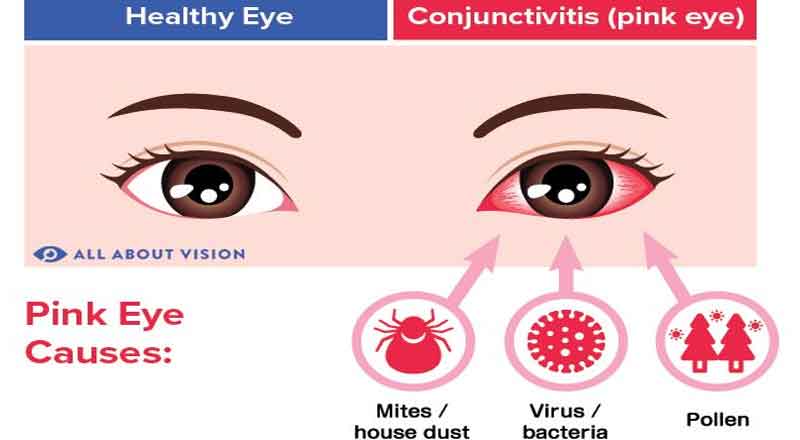Amid the monsoon season in India, several cities like Delhi-NCR, Kolkata, Vadodara, and Arunachal Pradesh are experiencing a rise in Conjunctivitis or Pink eye cases. Conjunctivitis, commonly known as Pink Eye, is an infection or inflammation of the transparent membrane that covers the eyelid and eyeball. It can be caused by viruses, bacteria, or by allergies.
Health Minister Saurabh Bharadwaj told, “These cases are coming up due to humidity in the air. Our hospitals are on alert, especially related to cases of conjunctivitis, fungal infections, and vector-borne diseases.”
In Delhi, DR JS Titiyal, Chief RP Centre for Ophthalmic Sciences at AIIMS told the news agency, “We are getting at least 100 cases of conjunctivitis per day. There is usually a seasonal increase in conjunctivitis cases, which coincides with the flu season. The conjunctivitis cases are mostly caused by a virus.”
Both government and private hospitals are on high alert in the city. According to the news agency, a private eye care hospital in Delhi recorded 1,032 conjunctivitis cases, while the total number of cases across India was around 1,521.
Furthermore, in the Long ding district of Arunachal Pradesh, schools have been temporarily closed amid the outbreak as part of precautionary steps for kids.
Here’s what you need to know about conjunctivitis and ways to prevent it:
Conjunctivitis, commonly known as Pink Eye, is an infection or inflammation of the transparent membrane that covers the eyelid and eyeball. It can be caused by viruses, bacteria, or by allergies. Both bacterial and viral conjunctivitis are highly contagious, while allergic conjunctivitis is not.
According to medical experts, children are more susceptible to getting pink eye, due to their frequent close contact with individuals and also because they are not that hygienic.
Common ways to get contagious pink eye include:
Direct contact with an infected person, especially through hand-to-eye contact.
Inadequate cleaning of contact lenses or specs properly, including the use of poorly fitting contact lenses.
How to recognize if you have conjunctivitis?
- Red and burning eyes
- Itchiness
- Puffy eyelids
- Blurry or hazy vision
- Excessive mucus or yellow/white discharge from the eyes
How to treat Conjunctivitis
There is no specific treatment for conjunctivitis as it can be caused by most viruses. It can last up to 1 to 2 weeks, depending on its severity. Always consult a doctor before drawing conclusions.
Precautions:
- Maintain proper hygiene like washing your hands regularly before touching your eyes.
- Avoid rubbing your eyes.
- Keep your eyes clean, including refraining from touching eyes with unwashed hands.
- Avoid sharing personal items such as towels, and handkerchiefs.
- Use protective eyewear such as sunglasses.
- Avoid self-medication and consult an ophthalmologist.
(With inputs from agencies)





